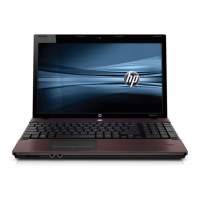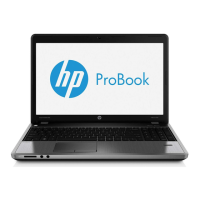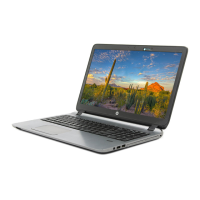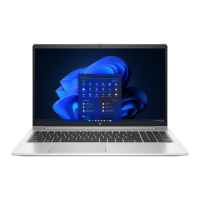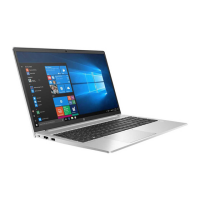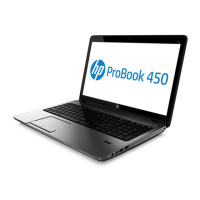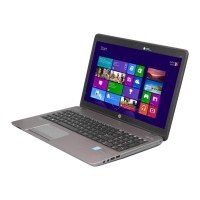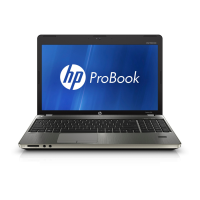
Do you have a question about the HP PROBOOK 4530S and is the answer not in the manual?
| Operating temperature (T-T) | 5 - 35 °C |
|---|---|
| Operating system installed | Windows 7 Professional |
| Operating system architecture | 64-bit |
| Memory slots | 2x SO-DIMM |
| Internal memory | 2 GB |
| Memory clock speed | 1333 MHz |
| Internal memory type | DDR3-SDRAM |
| Maximum internal memory | 8 GB |
| HDD speed | 7200 RPM |
| HDD interface | SATA II |
| Optical drive type | DVD Super Multi DL |
| Card reader integrated | Yes |
| Total storage capacity | 320 GB |
| Bus type | DMI |
| Stepping | J1 |
| Tjunction | 100 °C |
| Processor cache | 3 MB |
| Processor cores | 2 |
| Processor model | i3-2310M |
| System bus rate | 5 GT/s |
| Processor family | Intel® Core™ i3 |
| Processor series | Intel Core i3-2300 Mobile Series |
| Processor socket | BGA 1023 |
| Processor threads | 4 |
| Processor codename | Sandy Bridge |
| Processor frequency | 2.1 GHz |
| Processor cache type | Smart Cache |
| Processor lithography | 32 nm |
| Processor manufacturer | Intel |
| Processor front side bus | - MHz |
| PCI Express slots version | 2.0 |
| ECC supported by processor | No |
| PCI Express configurations | 1x16, 2x8, 1x8+2x4 |
| Thermal Design Power (TDP) | 35 W |
| CPU multiplier (bus/core ratio) | 21 |
| Maximum number of PCI Express lanes | 16 |
| Display surface | Matt |
| Display diagonal | 15.6 \ |
| Display resolution | 1366 x 768 pixels |
| Native aspect ratio | 16:9 |
| Power supply type | AC |
| Intel segment tagging | Enterprise |
| Audio system | Premium Sound |
| Pointing device | Touchpad |
| Bluetooth version | 3.0+HS |
| Cabling technology | 10/100/1000Base-T(X) |
| Networking features | Gigabit Ethernet |
| Charging port type | DC-in jack |
| USB 2.0 ports quantity | USB 2.0 ports have a data transmission speed of 480 Mbps, and are backwards compatible with USB 1.1 ports. You can connect all kinds of peripheral devices to them. |
| Firewire (IEEE 1394) ports | 0 |
| AC adapter power | 65 W |
| Number of battery cells | 6 |
| Sustainability certificates | ENERGY STAR |
| On-board graphics card ID | 0x116 |
| Discrete graphics card model | Intel® HD Graphics 3000 |
| On-board graphics card family | Intel® HD Graphics |
| On-board graphics card base frequency | 650 MHz |
| On-board graphics card dynamic frequency (max) | 1100 MHz |
| Processor code | SR04S |
| Processor ARK ID | 52220 |
| Processor package size | 37.5 x 37.5 xrPGA988B); 31 x 24 (BGA1023) mm |
| Supported instruction sets | AVX |
| Intel Identity Protection Technology version | 1.00 |
| Country of origin | China |
| Depth | 256 mm |
|---|---|
| Width | 374 mm |
| Height | 28.7 mm |
| Weight | 2360 g |
Lists and details various Intel processors supported by the models.
Describes memory module types and configurations supported.
Lists supported SATA hard drives and their accessibility.
Provides an exploded view and list of major internal computer components.
Explains electrostatic discharge (ESD) and how to prevent damage.
Introduces the chapter on replacing computer components.
Details the removal and installation procedures for the battery.
Details the procedure for removing and installing the hard drive.
Explains how to remove and install memory modules.
Details the procedure for removing and installing the system board.
Provides instructions for removing and installing the processor.
Provides instructions for removing and installing the entire display assembly.
Explains how to access and use the Computer Setup utility.
Provides steps to enter the Computer Setup utility.
Details how to reset Computer Setup settings to their factory defaults.
Explains how to update the system's BIOS.
Provides instructions for downloading BIOS updates from the HP website.
Explains how to run diagnostic tests to check hardware functionality.
Lists general physical and input/output specifications for the models.
Covers backup and recovery procedures for Windows 7.
Explains how to back up personal files and system settings.
Details methods for recovering the system from failure or instability.
Explains how to use Windows Backup and Startup Repair tools.
Describes how to use the f11 key for factory image recovery.
Covers backup and recovery procedures for Windows Vista.
Explains how to back up personal files and system settings for Windows Vista.
Details methods for recovering the system from failure or instability in Vista.
Explains how to use Windows Backup and Startup Repair tools in Vista.
Describes how to use the f11 key for factory image recovery.


